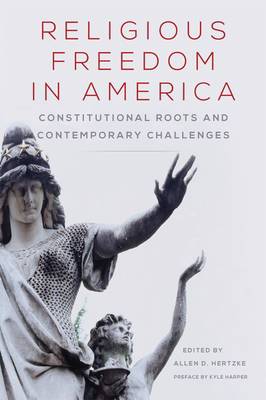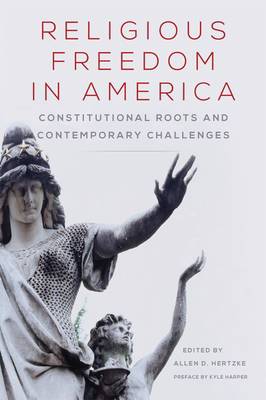
- Afhalen na 1 uur in een winkel met voorraad
- Gratis thuislevering in België vanaf € 30
- Ruim aanbod met 7 miljoen producten
- Afhalen na 1 uur in een winkel met voorraad
- Gratis thuislevering in België vanaf € 30
- Ruim aanbod met 7 miljoen producten
Zoeken
Religious Freedom in America
Constitutional Roots and Contemporary Challengesvolume 1
€ 42,45
+ 84 punten
Omschrijving
All Americans, liberal or conservative, religious or not, can agree that religious freedom, anchored in conscience rights, is foundational to the U.S. democratic experiment. But what freedom of conscience means, what its scope and limits are, according to the Constitution--these are matters for heated debate. At a moment when such questions loom ever larger in the nation's contentious politics and fraught policy-making process, this timely book offers invaluable historical, empirical, philosophical, and analytical insight into the American constitutional heritage of religious liberty. As the contributors to this interdisciplinary volume attest, understanding religious freedom demands taking multiple perspectives. The historians guide us through the legacy of religious freedom, from the nation's founding and the rise of public education, through the waves of immigration that added successive layers of diversity to American society. The social scientists discuss the swift, striking effects of judicial decision making and the battles over free exercise in a complex, bureaucratic society. Advocates remind us of the tensions abiding in schools and other familiar institutions, and of the major role minorities play in shaping free exercise under our constitutional regime. And the jurists emphasize that this is a messy area of constitutional law. Their work brings out the conflicts inherent in interpreting the First Amendment--tensions between free exercise and disestablishment, between the legislative and judicial branches of government, and along the complex and ever-shifting boundaries of religion, state, and society. What emerges most clearly from these essays is how central religious liberty is to America's civic fabric--and how, under increasing pressure from both religious and secular forces, this First Amendment freedom demands our full attention and understanding.
Specificaties
Betrokkenen
- Uitgeverij:
Inhoud
- Aantal bladzijden:
- 288
- Taal:
- Engels
- Reeks:
- Reeksnummer:
- nr. 1
Eigenschappen
- Productcode (EAN):
- 9780806147079
- Verschijningsdatum:
- 13/01/2015
- Uitvoering:
- Paperback
- Formaat:
- Trade paperback (VS)
- Afmetingen:
- 152 mm x 226 mm
- Gewicht:
- 399 g

Alleen bij Standaard Boekhandel
+ 84 punten op je klantenkaart van Standaard Boekhandel
Beoordelingen
We publiceren alleen reviews die voldoen aan de voorwaarden voor reviews. Bekijk onze voorwaarden voor reviews.










